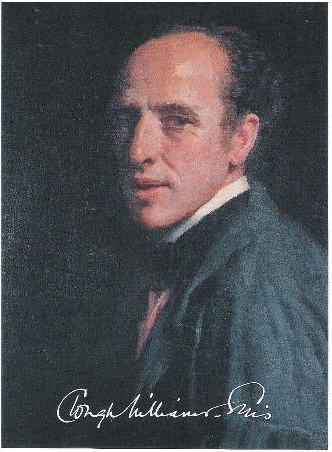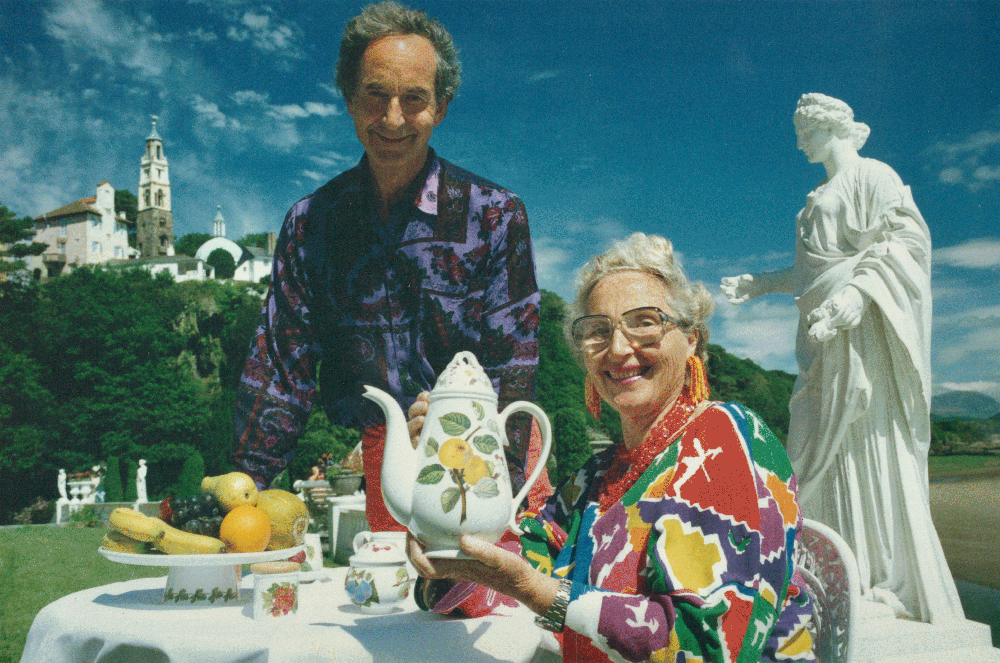- Sir Clough Williams-Ellis
Rose's great-grandfather was the renowned British architect and pioneer of ecological conservation, most famous for his life's work, Portmeirion Village, in Snowdonia. Growing up, Rose spent family weekends at Portmeirion, and fell in love with the meandering forests and gardens, the coastal walks and the elegant buildings.
Clough was also instrumental in the establishment of National Parks in the United Kingdom, and was passionate about the conservation of Snowdonia in Wales, where his family originated.
Clough was given a house, Plas Brondanw, in 1902 by his father on his marriage to Amabel Strachey. His work on the house and landscaping of the gardens was received with much acclaim, and today the gardens are open to visitors. In 2014, Rose was married in the Plas Brondanw gardens.
The beautiful Italianate village in North Wales was the star of the hit tv series, The Prisoner, and a popular retreat for artists. For example, Noel Coward wrote Blithe Spirit while staying in the village and George Bernard Shaw, H. G. Wells, Frank Lloyd Wright and The Beatles were all frequent visitors to Portmeirion.
The gardens at Plas Brondanw are the finest example of Sir Clough’s talent for creative landscape design, where he created a unique and majestic landscape. Inspired by the gardens of renaissance Italy, strong architectural references are evident in the form of stone walls, topiary and avenues of trees leading the eye to the dramatic back drop of the mountains beyond.
Plas Brondanw is the place that Rose's mother was born and grew up in. It has been in the family since it was built in the 16th century.
The house is now to continue the tradition of supporting and celebrating the arts and design by becoming the home for the Ymddiriedolaeth Susan Williams-Ellis Foundation, an archive and gallery of the family's work, and facility for an artists' residency programme.
Susan Williams-Ellis was Clough's daughter, and Rose's grandmother. She was the renowned artist and founder of Portmeirion Potteries. She was creative from an early age, having studied ceramics with Bernard and David Leach whilst at the Dartington Hall School, and moving on to a degree at Chelsea School of Art, where her teachers were Graham Sutherland and Henry Moore.
Susan started Portmeirion Potteries in the early 1960s, and the company quickly became known for the interesting and elegant shapes Susan created. Her Totem design during this time became a defining collection for the company, and her Botanic Garden collection which launched in 1972 became what is now the most recognised pattern in British pottery.
Portmeirion Potteries was the subject of a standalone exhibition at the V&A museum in London titled "Portmeirion: Pottery Trendsetter" in 2018.
Susan was a prolific artist, and as well as running Portmeirion, she created a huge amount of work. One of her favourite pastimes was scuba diving and snorkelling, which she did all over the world in order to sit at the level of coral reefs and sketch fish from life using tracing paper and crayons.
Her beautiful works from these trips to the Indian, Pacific and Caribbean oceans was one of the reasons she was given an honorary fellowship by the University of The Arts London in 2005.
Rose has collaborated with The Susan Williams-Ellis Foundation at the family home of Plas Brondanw to produce a stunning range of homewares featuring little-known designs by her grandmother Susan.
Shop the CollectionRose loves the interior design ethos of the infamous Bloomsbury set, of which many of her cousins, including Lytton Strachey, were involved in the 1920s and 1930s.
In fact, Rose is passionate about painting on surfaces, including walls and furniture. She has developed a style reminiscent of Bloomsbury in her work.
See Mural worksArtists and creators make up a large part of Rose's antecedents, with those notable being Amabel Williams-Ellis, author of science fiction, fairytales and novels, who was daughter of John St Loe Strachey, the longest-serving editor of The Spectator (1887-1925).
Lytton Strachey was a cousin of Amabel's, and member of the literary and artistic Bloomsbury Group.
On the other side of Rose's family were a family of publishers called Blackie. They were Scottish, and commissioned a family home from Charles Rennie Mackintosh, which is now a Landmark Trust example of his finest work called The Hill House.

